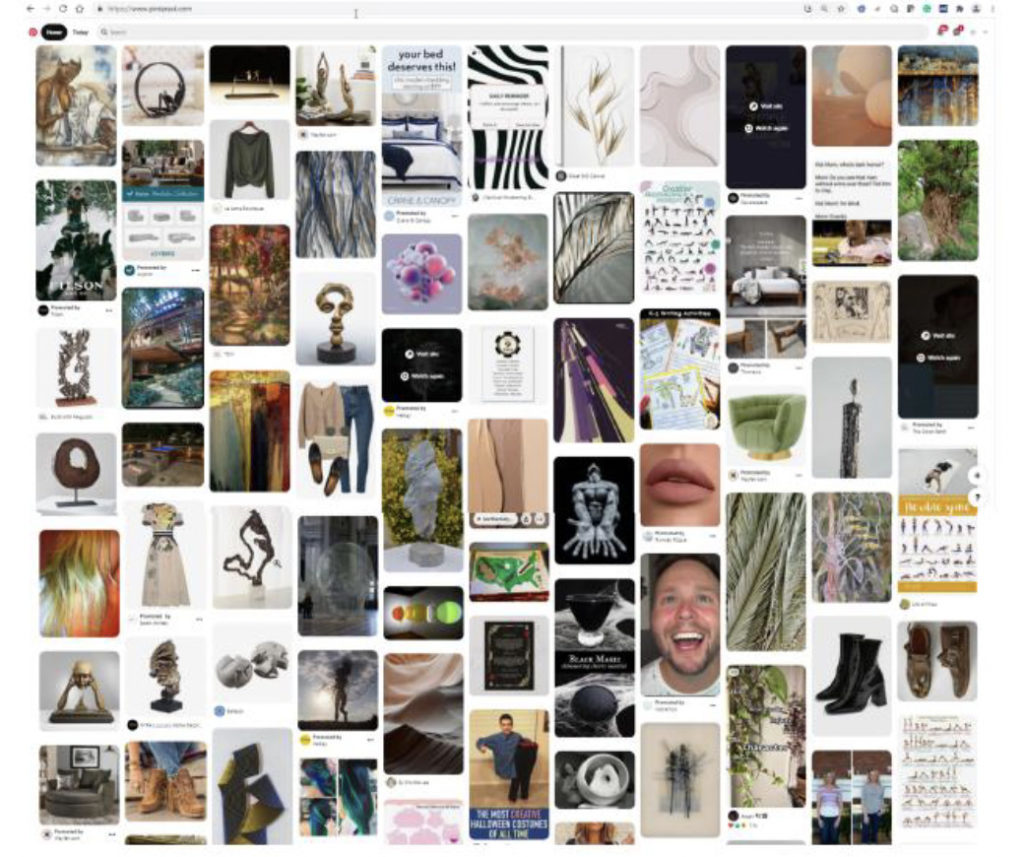“Courts have not withheld [ DMCA ] safe harbor protection simply because service providers advertise on their platforms alongside user-uploaded content.”

Source: court order
The U.S. District Court for the Northern District of California this week ruled that the safe harbor provision of the Digital Millennium Copyright Act (DMCA) protects Pinterest from a photographer’s claim that the platform infringed his copyrights by displaying his works alongside advertisements in the form of “promoted pins.”
Harold Davis, an artist and professional photographer, claimed that Pinterest infringed 51 of his copyrighted works. In one example, Davis’ work, “Kiss from a Rose,” was displayed next to a promoted Pin for an art print called “White Tea Roses by Neicy Frey,” which Davis contended constituted unauthorized commercial use of his work. He also challenged the display and distribution of his works in emails and push notifications to users. He estimated the “infringements by Pinterest during the three-year statute of limitations period to be in the hundreds of thousands, if not millions,” and noted that “just one of his works, ‘Duet of Daffodils,’ appeared on Pinterest’s website 4,676 times over the course of just two weeks.”
Davis argued that Pinterest does not qualify for the DMCA safe harbor for the following reasons:
(1) Pinterest’s infringing activity is not “by reason of . . . storage at the
direction of a user”;
(2) Pinterest has “the right and ability to control” the infringing activity; and
(3) Pinterest receives “a financial benefit directly attributable to the infringing activity.”
He did not challenge Pinterest’s users’ use of his works or Pinterest’s practice of creating variants of the works for standard display to be more compatible with the platform, but instead very narrowly challenged the “creation of variants and use of algorithms to ‘select and display Plaintiff’s Works in the context of advertisement.’”
The court rejected this argument as unsupported by the record. The assertion that Pinterest embedded data within Davis’ works to create or obtain signals for its advertising algorithms was not borne out by the evidence and mischaracterized Pinterest’s testimony, added the court. The order explained:
The uncontroverted evidence in the record indicates that the “embeddings” discussed in the blog post and in employees’ testimony “are not pieces of data that are added to any image file on the service.” See Dkt. No. 174-14 at ¶ 4. “Embeddings” is simply a term of art in machine learning that refers to “cues (both visual and textual) that machine-learning algorithms glean from Pins, including from the image itself and the user-supplied title and description.”
The remaining claim, that “the use of computer algorithms to analyze user engagement and to tailor advertising prevents the application of the § 512(c) safe harbor,” was not supported by the case law, the court continued. Davis’ issue was not with infringing works uploaded by users, but with the idea that Pinterest is profiting from them. “Rather than notify Pinterest of alleged copyright infringement on its platform so Pinterest can remove it, Plaintiff wants Pinterest to continue to display his images on its website and mobile application, but he does not want Pinterest to profit in any way from doing so,” wrote the court.
Davis explained that “there was no avenue . . . for Mr. Davis to object to Pinterest’s commercial use of his Works but not request that the underlying Pin be taken down.” He also noted that it would take years for him to report each instance of individual infringement under the existing notice and takedown procedures. But the court said, “Congress, not this Court, decided as a policy matter who should bear the burden of identifying infringement in the first instance.”
Ultimately, the court held that Davis’ “novel theory” that either tracking user activity via algorithms or displaying advertising on a platform constitute infringement was unsupported. Citing Viacom International, Inc. v. YouTube, Inc., 676 F.3d 19 (2d Cir. 2012) as illustrative, the court noted that the “the evidence in this case indicates that the algorithms used to identify and display organic Pins are separate from the algorithms used to identify and display promoted Pins in a user’s feed,” and thus are simply “promoting user access to user-uploaded content.”
Furthermore, “courts have not withheld safe harbor protection simply because service providers advertise on their platforms alongside user-uploaded content,” and, in any case, Davis’ evidence did not “establish that Pinterest obtained a financial benefit distinctly attributable to the infringement alleged here.” The court concluded:
At bottom, Plaintiff’s theory appears to be that by displaying his works at all, Pinterest is able to drive traffic to Pinterest’s website, where it derives revenue from separate advertising. The Ninth Circuit has explicitly held that this is not sufficient. In the context of the pornography website in Motherless, the Court acknowledged that “[o]f course, the more pornography Motherless had, the more users it would attract, and more views would lead to more advertising revenue.” See Motherless, 885 F.3d at 613. But “[t]he words ‘the’ and ‘directly’ in the statute . . .must mean that some revenue has to be distinctly attributable to the infringing material at issue.”
Pinterest was represented by a Wilson Sonsini team led by David Kramer, and including associates Tom Wakefield, Andrew Kramer, and Qifan Huang.

![[IPWatchdog Logo]](https://ipwatchdog.com/wp-content/themes/IPWatchdog%20-%202023/assets/images/temp/logo-small@2x.png)

![[Advertisement]](https://ipwatchdog.com/wp-content/uploads/2024/04/Patent-Litigation-Masters-2024-sidebar-early-bird-ends-Apr-21-last-chance-700x500-1.jpg)

![[Advertisement]](https://ipwatchdog.com/wp-content/uploads/2021/12/WEBINAR-336-x-280-px.png)
![[Advertisement]](https://ipwatchdog.com/wp-content/uploads/2021/12/2021-Patent-Practice-on-Demand-recorded-Feb-2021-336-x-280.jpg)
![[Advertisement]](https://ipwatchdog.com/wp-content/uploads/2021/12/Ad-4-The-Invent-Patent-System™.png)







Join the Discussion
No comments yet.